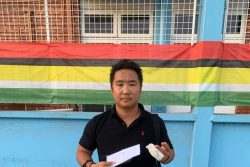WASHINGTON, (Reuters) – U.S. doctors said on Wednesday they have succeeded in coaxing the regeneration of muscle tissue lost in people who suffered traumatic injuries, including wartime bomb wounds, with a new type of treatment that uses material from a pig’s bladder.
Implanting the pig material at the wound site enticed the patient’s own stem cells – master cells that can transform into various kinds of cells in the body – to become muscle cells and regenerate tissue that had been lost, the researchers said.
The study was small, involving only five male patients, but its results suggested that this procedure could offer new hope to a category of patients, including troops who suffered major war injuries, with scant good treatment options, they added.
All five patients, including two U.S. soldiers hurt by bombs planted by insurgents, had badly damaged leg muscles. The research was backed by $3 million in funding over five years from the U.S. Defense Department, said Dr. Stephen Badylak of the University of Pittsburgh, who led the study.
Thousands of American troops have been left with serious physical impairments after sustaining wounds involving major loss of muscle tissue in roadside bombings and other incidents since 2001 in the wars in Iraq and Afghanistan.
When a large amount of muscle is lost in vehicle crashes, industrial accidents, bomb blasts or other traumas, the body is unable to replace it and the site forms scar tissue that lacks the functionality of the lost muscle.








